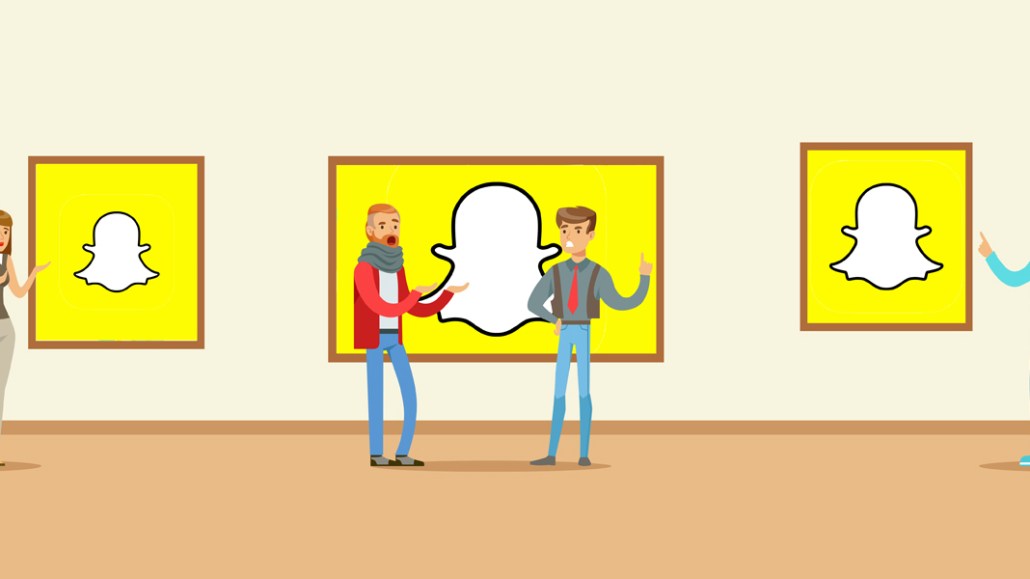‘We don’t get any real figures’: In risk-averse Germany, Snapchat faces challenges

Snapchat is pushing further into European markets, and Germany is a big priority. But growth there won’t be easy.
What works in the U.S. and Britain doesn’t necessarily fly in Germany, where business executives can be more risk averse. And defaulting to Snapchat’s success in the U.S. doesn’t cut it with all publishing and media agency execs in Germany. There, they expect more local expertise and more clarity on audience numbers.
“Snap is surfing a high tide in the U.S. They think the tide is the same here, but it’s not,” said Norman Wagner, managing director of MediaCom Beyond Advertising. “We don’t get any real figures to show reach here. It’s just, well, we’re Snap. It’s a flaw that many of the U.S. startups have had when approaching the European markets.”
It’s early for Snap in Germany. Four media companies have launched as Discover partners, with Spiegel Online and Bild the first homegrown German media houses to join. (Sky Sports and Vice already have a Snapchat Discover presence in the U.K. and U.S.) Both Spiegel Online and Bild are confident the platform could give them access to its much-coveted young audience, and they are putting big teams behind it. The challenge of such large outlays is the German market is far smaller than the U.S. Snapchat claimed in its earnings call yesterday 55 million users across all of Europe.
Others are less certain. It took Snap two years to secure Discover launch partners, according to independent publisher consultant Oliver von Wersch. “It took so long because they wanted publishers to guarantee they would put a minimum of five dedicated people behind it and commit to a certain output, but really they wanted to have complete control on things, including monetization,” he said. “They don’t declare their local market figures; they just say, ‘Trust us we have the experience in the U.S. — it will be big, there will be money.’” That’s one reason Snap doesn’t have more media partners for launch, he added.
That said, Snap isn’t the first American company to face doubts in Germany. One media executive, who spoke on condition of anonymity, described the expansion of U.S. platforms Facebook, Google and Twitter as one “continuous disappointment story,” adding that it took those companies a good two years to embed themselves as media partners in the German market.
In some ways, Snap may benefit from being later to the German market than the likes of Facebook and YouTube. Snap will open an office there in the next few months and has poached former Facebook country director Marianne Bullwinkel to leads its sales efforts. “That’s a smart move because Marianne has access to all the CMOs here, all the agency CEOs and managing directors of the larger agency groups,” von Wersch said. “That makes sense for the brand and advertising side.”
Snapchat is starting to make moves, launching lenses in the German market, with other features pending. That has made creative agencies excited about its potential, including Ogilvy & Mather Germany, which ran a Snapchat game for Coca-Cola last week using the Stories feature. “Snapchat is definitely getting some traction in Germany when it comes to the 14- to 29-year-old audience, and the slightly more localized approach will help to accelerate growth,” said Simon Usifo, managing director at Ogilvy & Mather Berlin. “The art is to collaborate with the right influencers to maintain the authenticity and not to force the brand onto that platform at all costs just because the audience is there,” he added.
Snap’s impending launch of a self-serve ad platform has also stirred interest in Germany. Previously, booking local campaigns with Snap has been difficult, with some agencies being told they have to be part of wider international partnerships or that they’ll be run from the London office. The self-serve platform will allow agencies to test how Snap ads work for clients with smaller budgets, according to Max Embert, social media specialist at Publicis Pixelpark.
Snap doesn’t yet separate German user numbers, though some agencies rely on research tools to estimate usage. Publicis Pixelpark uses data from research firm Best for Planning, which put Snapchat’s German users at 900,000 in 2016. The lack of precise measurement doesn’t deter some agencies. They’re used to flying blind. “We are used to being given U.S. numbers. It’s a problem generally here because we want to know if it will work for German users,” Embert said. “For a long time Twitter didn’t give us German user numbers and neither did Pinterest. So Snapchat not doing it isn’t that much of a surprise for us.”
There’ll be some catching up to do for Snap, however. Instagram had a head start in Germany, where agencies say it has 8 million daily users and is bedded in with publishers and agencies. It also has the pulling power of its parent Facebook.
The jury is still out on Snap for media agencies. “Sharing more data, especially data that enables the agency to consult the client, would really help us invest,” Wagner said. “That’s the only reason for us to exist, so we can fully inform the client, but we need access to the data. But it won’t happen in the short term. Global rollout is not as easy as they think.”
More in Media

Media Briefing: The top trends in the media industry for 2025
This week’s Media Briefing takes a look at the top trends from 2025, from digital advertising revenue performance to AI licensing deals.

Digiday Scorecard: Publishers rate Big Tech’s AI licensing deals
Digiday has compiled a scorecard grading AI platforms to make sense of the growing number of players in the AI content licensing market.

Publishers are hunting for AI prompt data — now they’re starting to get it from third-party companies
Publishers are finally gaining some visibility into AI search, as new prompt data tools crack open a black box.








